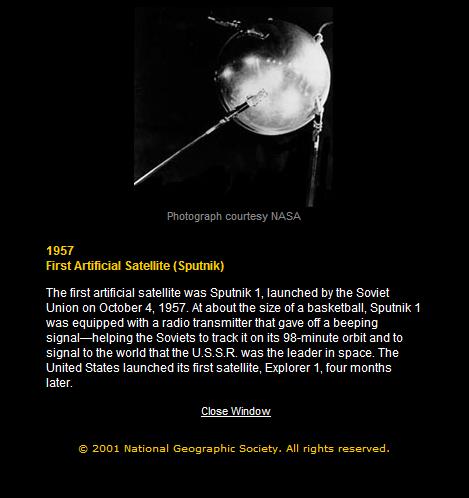This Geocache can be found on its own, or as part of the series
that is placed within this section of land. You do not need to find
any others in order to find this one, and all of them utilize the
same parking location.
You can park your vehicle at N 43d 03.178’ x W 79d 16.229’
There are numerous ATV Trails throughout this area, however
there is no signage to indicated that ATV’s are permitted.
The text after this is for those wishing to complete the entire
series.
For most people, GPS Units and Satellites are basically some
strange black box that we have a minor understanding of how it
works, but most of the technical details are not really important.
As long as we can find our way, that’s good enough. The short
version is that GPS units determine our location based upon a
calculation of the distance we are away from Satellites that are in
orbit above the Earth. This is called Triangulation. Normally only
three Satellites are needed to determine a location, but the more
that are available the more accurate the GPS Unit becomes. However,
even with multiple Satellites, accuracy can vary around 5-10
meters.
This Geocache is one of four Satellite Geocaches. On the outside
of the container is the distance in meters that this location is
away from the GPS Unit. By using the distances found on some or all
of the Satellite Geocaches you will be able to find the GPS
Unit.
The remainder of this Geocache Description is purely for
historical or educational purposes. As such the rest of the
provided text will not assist you with finding any of the Geocaches
in the area.
The History of Satellites – SPUTNIK

As copied from:
NASA’s Sputnik
and The Dawn of the Space Age
History changed on October 4, 1957, when the Soviet Union
successfully launched Sputnik I. The world's first artificial
satellite was about the size of a basketball, weighed only 183
pounds, and took about 98 minutes to orbit the Earth on its
elliptical path. That launch ushered in new political, military,
technological, and scientific developments. While the Sputnik
launch was a single event, it marked the start of the space age and
the U.S.-U.S.S.R space race.
The story begins in 1952, when the International Council of
Scientific Unions decided to establish July 1, 1957, to December
31, 1958, as the International Geophysical Year (IGY) because the
scientists knew that the cycles of solar activity would be at a
high point then. In October 1954, the council adopted a resolution
calling for artificial satellites to be launched during the IGY to
map the Earth's surface.
In July 1955, the White House announced plans to launch an
Earth-orbiting satellite for the IGY and solicited proposals from
various Government research agencies to undertake development. In
September 1955, the Naval Research Laboratory's Vanguard proposal
was chosen to represent the U.S. during the IGY.
The Sputnik launch changed everything. As a technical
achievement, Sputnik caught the world's attention and the American
public off-guard. Its size was more impressive than Vanguard's
intended 3.5-pound payload. In addition, the public feared that the
Soviets' ability to launch satellites also translated into the
capability to launch ballistic missiles that could carry nuclear
weapons from Europe to the U.S. Then the Soviets struck again; on
November 3, Sputnik II was launched, carrying a much heavier
payload, including a dog named Laika.
Immediately after the Sputnik I launch in October, the U.S.
Defense Department responded to the political furor by approving
funding for another U.S. satellite project. As a simultaneous
alternative to Vanguard, Wernher von Braun and his Army Redstone
Arsenal team began work on the Explorer project.
On January 31, 1958, the tide changed, when the United States
successfully launched Explorer I. This satellite carried a small
scientific payload that eventually discovered the magnetic
radiation belts around the Earth, named after principal
investigator James Van Allen. The Explorer program continued as a
successful ongoing series of lightweight, scientifically useful
spacecraft.
The Sputnik launch also led directly to the creation of
National Aeronautics and Space Administration (NASA). In July 1958,
Congress passed the National Aeronautics and Space Act (commonly
called the "Space Act"), which created NASA as of October 1, 1958
from the National Advisory Committee for Aeronautics (NACA) and
other government agencies.
For more information regarding the History of Satellites, check
out
National
Geographic: Eye in the Sky
Hope you enjoy the cache - Please ensure that the geocache is
well hidden in the same location that it was found.
 The Blue Quasar
The Blue Quasar
Cache Maintenance Performed On: 31 JUL 08
Details: Archived - Cache Container Removed
Thanks to all those that visited.

Click on
Weather Report for today's short term weather forecast before
you attempt this geocache.
Current weather conditions are:
This Geocache will be Archived on: 29 JUL 08
Any logs that contain SPOILERS will be
deleted without exception, and will have to be re-entered by the
seeker to be accepted.
This also applies to logs that contain content suggesting
inappropriate activity or do not conform to the guidelines as
listed on the Cache Page or no longer relevant.
Any needed assistance was included in the HINTS section, and was
provided by the Cache Owner.